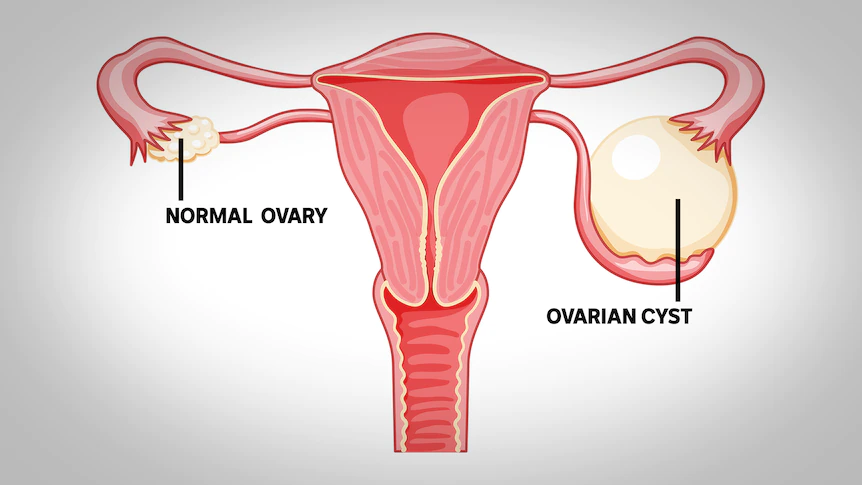Ovarian cysts are fluid-filled sacs that develop within or over the surface of the ovaries. They are a common gynaecological concern and can vary in size, shape, and composition. Certainly, not all ovarian cysts necessitate medical intervention. The natural course of ovarian cysts in premenopausal women typically involves growth and subsequent resolution over the span of 2-3 menstrual cycles.
On the other hand, some women may experience ovarian cysts that tend to enlarge, induce discomfort, and exhibit characteristics that represent malignancy, thereby prompting the consideration of surgical options. These options may entail the removal of the cyst itself or even the entire affected ovary. The decision to operate or observe these cysts depends on several factors, including their size, appearance, symptoms, and the patient’s age and medical history.
Let’s understand it with the help of different types of ovarian cysts.
Functional ovarian cysts
The prevailing variety among ovarian cysts is known as functional ovarian cysts. These cysts ordinarily align with the natural menstrual cycle and remain inconspicuous, scarcely showing any symptoms. Over the course of 2-3 menstrual cycles, they tend to naturally diminish. These are of two types:
-Follicular cysts: Within the ovary, a minute sac-like structure called a follicle releases an egg during each menstrual cycle. However, under specific conditions, when the follicle fails to expel the egg, it can accumulate fluid, resulting in the development of a cyst.
-Corpus luteum cysts: This happens when the follicle has released an egg but produces a group of cells called the corpus luteum responsible for providing blood supply to the foetus during pregnancy. Sometimes when pregnancy does not occur, the corpus luteum gets filled with fluid or blood, thereby causing a ‘luteal cyst’.
Dermoid cyst
Dermoid cysts originate from the reproductive cells responsible for egg production within the ovary. It can contain hair, skin, or teeth tissue, but it is rarely cancerous. The stem cells when trapped in the wrong area during early development as a foetus, cause the dermoid cyst. Generally, these cysts do not cause any noticeable problems but if a dermoid cyst is large, causing pain, discomfort, or other symptoms, or if there are concerns about its potential to rupture or twist the ovary, surgical removal might be considered.
Cystadenoma
A cystadenoma is a specific type of cyst originating from cells located on the outer layer of an ovary. These cysts have the potential to become filled with either a watery or mucous substance. Notably, they can grow to significant sizes, occasionally leading to complications. In cases where a cystadenoma attains substantial dimensions and poses risks such as ovarian torsion (twisting), rupture, or disturbances to adjacent organs, surgical removal may be a viable consideration.
Endometriomas
Endometriomas, commonly referred to as chocolate cysts, arise as a consequence of endometriosis—a condition characterized by the growth of uterine lining-like tissue beyond the uterus. Occasionally, these tissues can affix to the ovary, giving rise to a cyst that becomes replete with blood resembling the hue of dark chocolate. This cyst is known as Endometrioma. Endometriomas may lead to fertility challenges. If significant pain, disruptions to daily life or fertility issues arise due to an endometrioma, surgical intervention could be an option to address these concerns.
In conclusion, the management of ovarian cysts is a nuanced process that depends on various factors. Not all ovarian cysts require surgical intervention, as many functional cysts resolve naturally over a few menstrual cycles. However, for certain cysts, such as dermoid cysts, cystadenomas, and endometriomas, surgical removal might be considered if they cause significant symptoms, discomfort, or health challenges.


Leave A Comment